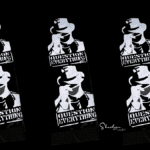Estimated reading time: 4 minutes
Every single initiative that organizations create needs to be evaluated. That’s not a bad thing. It’s absolutely necessary. But organizations must make sure they’re measuring the right things.
When it comes to learning, there’s lots of talk about aligning training metrics to business goals. It’s a very valid point. The whole purpose of learning is to improve employee performance, which will ultimately have a positive impact on organizational performance (and goals).
The alignment of learning and organizational goals should happen early in the design process. Regular readers of HR Bartender know I’m a fan of the ADDIE model (assessment, design, development, implementation, and evaluation). If you’re using ADDIE to design a program, then creating alignment would ideally take place during the ASSESSMENT and DESIGN phases. Because that’s where the organization makes decisions about what the training is going to cover.
For example, the organization might be planning to develop a learning program on coaching skills because employee engagement scores are down in that area. Then the best way to align learning with metrics is to use employee engagement scores to determine program success.
But there’s another learning metric that is often overlooked: employee feedback. Sometimes organizations are so focused on the business metrics that they forget employee feedback plays a significant role in the success of learning. I’m not discounting business metrics but think about how successful a learning initiative would be if every employee hates it, doesn’t want to attend, and doesn’t participate at a high level. Here are three opportunities to solicit employee feedback about learning:
One-on-One Meetings. When learning is conducted in an individual setting, such as with a mentor or manager, it might be helpful to ask for direct feedback. This could be established during the first mentoring session or mentioned regularly during one-on-one meetings. That way, the employee understands that feedback is expected and can start to open up with their thoughts.
Person-to-person feedback gives both the sender and the recipient an opportunity to ask questions and gain clarity. It does require trust between individuals and a sincerity that the feedback will be accepted.
Kirkpatrick Level 1 Evaluation (Reaction). Developed by Donald Kirkpatrick, a level one evaluation is that piece of paper or online evaluation that gauges an employee’s immediate reaction to the training. Some common questions ask about the room, temperature, facilitator skills, etc. If you don’t ask about it already, one question to consider adding is, “What topics would you like to see future training sessions focus on?” It’s a great opportunity to have employees share their thoughts. HR might see some trends worth exploring.
While this type of evaluation might seem on the surface as being very basic, first impressions are important. This will offer insight into what an employee is probably telling their co-workers upon leaving training.
Focus Groups. The focus group format can be helpful when you have groups going through a program together, such as new hires attending orientation and onboarding. Or a management development program where participants complete several learning activities over the course of time.
Asking for employee feedback not only helps to evaluate the program that just took place, but it allows the organization to ask questions about future versions of the program. The group might suggest ideas that they wouldn’t have considered sharing individually.
When it’s time to evaluate learning, organizations need to make sure that the program objectives were accomplished. Using business metrics is great, but don’t forget employee feedback.
Employee impressions of the learning activity will be shared in the cafeteria and via text messages. If employees leave loving the learning, their co-workers will want to know when they get to attend. If employees hate it, their co-workers will find excuses not to participate. And that ultimately impacts the business metric the program is trying to change.
Image captured by Sharlyn Lauby while exploring the streets of Long Beach, CA
17







